We take the gloves off four petrol-powered sedans at the BIC...
A couple of months ago, we brought four compact sedans and five hatchbacks to the track to see which ones got our pulse racing. The idea was to take nine of your favourite everyday machines – the chariots of choice for your commute – to the track to gauge which ones had the potential to plaster the biggest smile during a spirited Sunday drive. Well, I’m happy to report that we got a lot of great feedback to that piece. And, personally, I’m very glad to see that it resonated with you – because it means that you care about the performance of your everyday machines. The other specific piece of feedback we got from you folks was that we really ought to have used petrol-powered machines instead – since the price of petrol has been dropping, and consequently their popularity increasing. Not to mention, of course, that it’s a track test and that suits the high revving nature of petrol engines far better.
So, here we are – let it never be said that we don’t listen to feedback! In this iteration of the theme we have four proper sedans – the Honda City, Hyundai Verna, Maruti Suzuki Ciaz, and the Volkswagen Vento. Now it’s a bit of a déjà vu moment because we brought three of these four to the track for our February 2014 issue. And the results were pretty tight, the City sneaked ahead by just two-tenths of a second over the Hyundai Verna – while the Vento was about two seconds slower. Yes, the Vento had the most sorted chassis, but the DSG gearbox would upshift at even the slightest hint of wheelspin – even in manual mode. So, at corner exit instead of revving all the way to the redline it would short shift at about 4,000rpm instead. Now, when you’ve got just 104bhp to play with you need to use “all” of them. But the Vento has since been face-lifted, so it’s taking another shot at glory in its latest avatar. The Verna too has been to the plastic surgeon, and shows up post a fairly impressive nip-and-tuck – even though neither car has any real mechanical changes. Meanwhile, the petrol powered Ciaz makes its first visit to the track – and we already know that it’s a pretty impressive chassis, even if it’s down on power (at 91bhp, it’s the lowest of the group).
Now, when you analyse the data of this test you’ll notice a couple of things. The first being that we’re not listing top-speed down the back straight, and we don’t have any telemetry graphs to share. Well, truth be told, our V-Box failed at the last minute – and the timing system at the track wasn’t up and running. But don’t worry, we had two stop watches out to ensure that the times were accurate to the last millisecond. This is for national pride after all – Japanese, Korean, and German (you could even say Indian in the case of Maruti). And before you scoff, don’t forget that until a couple of decades ago the stopwatches were out in full force even in the Formula 1 paddock – so it’s quite a tried-and-tested method of lap timing. You’ll also notice that the lap times are decidedly slower than our previous test. But if you’ve followed AutoX for a while you’ll know that track temperature has a huge role to play in performance at the track. The hotter it is, the worse the performance is typically. So, bearing in mind that the previous test was in January, the difference in lap time (on average, two seconds slower) is expected. The good thing is that there’s consistency in the results – the Verna and Vento were both exactly 1.8 seconds slower than before. The City, however, was a full 4.5 seconds slower – which is a bit quizzical!
It has the same 1.5 litre iVTEC engine as before, which produces 117bhp at 6,600rpm. It was a brand spanking new car this time though, so it could be a case of not having been run in enough before being maxed out at the track. At 2:49.8 it was slowest of the lot. The only other suspect could be the tyres, but from what I recall the 175/65 R15 Michelin Energy XM1 tyres are the same as before. Yes, they’re overtly designed to maximise fuel efficiency – grip be damned – but that was true before as well. For what it’s worth, the City actually feels the most racy of the group. You sit low in the cabin, with a cockpit that feels very centred towards the driver. The stubby little gear lever falls perfectly to hand and can be rowed from gear-to-gear with just a flick of the wrist. It’s actually a real joy to go through the gears in this car. The engine as well has the most engaging note of this group. And, of course, the term VTEC still gets the juices of any enthusiast flowing. Sure, we’re all used to the mid range grunt provided by turbo-diesels these days but revving an engine all the way to the redline never gets old – especially in this case because it pulls all the way to 6,600rpm. In fact, you can very distinctly feel the VTEC cam come on song. The engine revs in a linear – and reasonably urgent – manner all the way to 5,000rpm, but then it shoots forward in a sudden spurt of thus far concealed horsepower. It’s most entertaining!
The steering is direct and the chassis predictable. It’s certainly encourages you to manhandle it – to the extent that you can sense that the DNA of Honda’s performance cars is buried somewhere in the bowels of this chassis. It’s just that, in this trim, it’s extremely difficult to extract it. The seats are comfortable, but not very supportive when dealing with heavy lateral loads. The tyres are the pits. This is the only car that would howl at the exit of every tight corner. You really have to manage the wheelspin. I, for one, would take delivery of this car from the nearest Honda showroom and head straight to my local neighbourhood tyre guy to get a set of grippier rubber. Sure, it’ll sacrifice some kilometres per litre, but the performance will be vastly improved. The next car on the list is the Volkswagen Vento, which is half-a-second quicker than the City. It’s the only forced induction motor here – with the 1.2 litre direct injection turbocharged engine producing 104 horsepower. It’s also the only car here with an automatic gearbox. And while it’s still a bit of a liability at the track, it was an absolute godsend en route to the track – tackling Delhi traffic in the monsoon is enough to test the patience of the most enlightened soul (a category that I most certainly don’t belong to). On the track, though, it was still plagued by the same problem as last time. The transmission would upshift early instead of holding on all the way to the redline. Of course, I had the traction control turned off – perhaps the situation would have been different if I had left it on. Although, I’m pretty sure that wouldn’t have done it any favours in terms of overall lap time either. In fact, despite the fact that the traction was turned off, the all-pervasive electric safety net was still there in the background just waiting to jump in to save the day if need be. Now, it wasn’t really required but it would still cut in and catch the brakes here and there if it felt the car struggling for grip.
In a car with 500 horsepower, I may even welcome it. But when you have just 104 horses to play with, you don’t really want an electronic barrier between yourself and the machine – especially if you consider the fact that the Vento has the best chassis in this bunch. The body control is impressive, and body roll is negligible. Don’t forget that this is, effectively, the same chassis as the most impressive car that I’ve driven in all my life – the Polo R WRC machine. As is, though, it’s a great car for everyday use. The facelift has done wonders. The cabin has the best quality of materials here, and the flat-bottomed steering is absolutely beautiful. Let me put it this way – on the track, the Vento was annoying, but it was the car that I drove home in after the test. Now, the Ciaz may have had the least amount of power in this group, but that didn’t prevent it from setting the second best time – at 2:48.9. Of course, this 1.4 litre engine is tuned for efficiency, but being a Suzuki motor it still loves to rev. It redlines at about 6,300rpm, but, really, it prefers it if you shift closer to 6,000. The clutch and gear lever are extremely light, and it slots into gear perfectly. It feels light on its feet as well, and so it turns into a corner extremely well. The only trouble is that the tyres seem to get overwhelmed mid-corner, following which it tends to run wide. Instead of hustling it though, if you drive it a little more sensibly, it feels extremely well balanced. The basics of the chassis are brilliant – it goes exactly where you want it with no drama whatsoever. The only trouble is that it feels a little under-tyred and under-engined for this particular test.
And that’s why it’s over a second-and-a-half slower than the fastest car in this test – the Hyundai Verna. At 1.6 litres, and 121 horsepower, it’s a no-brainer really – especially with the City out of contention thanks to its lack of grip. Levels of grip aside, though, the Verna certainly seems to have the most urgent power delivery of this group. Plus, it’s got a buttery smooth driveline. The engine sings all the way to 6,500rpm, and the gears slot into place like they’re being coerced through a tub of condensed milk. Everything just seems creamy smooth and very refined. Not that this car is track focussed though. It’s the softest of the lot, which means that it’s still skittish under hard braking – it’s Achilles heel – and it has the most body roll of the lot. In fact, under hard cornering you can come close to losing the back end when there’s a sudden weight transfer at the limit because of the body roll. But then, as always, we have to keep in mind that none of these cars are built for the racetrack. We simply put them in an extreme environment to lay their performance bare, and it has to be said that they all perform quite well in their own way. There’s no denying that the Verna is the quickest – by some margin – but the City is quite a lot of fun as well, despite being the slowest in this case. The DSG of the Vento isn’t as obedient as you want it to be on the track, but it’s a godsend on the road – where it responds absolutely instantly. And not just the Ciaz, but all of the cars here – with the exception of the Verna perhaps – feel like they could do with more po
The real takeaway for me was the joy of extracting every inch of performance from these petrol motors. Sure, modern diesels are incredibly refined and punchy, but there’s nothing quite like revving a smooth petrol motor past 6,000rpm. And of course, they sound a hell of a lot better – at regular speeds, as well as at the limit. So, I for one, am quite happy to see a bit of a petrol powered resurgence taking place – and, to that extent, none of these motors disappoint! Array [tab title="Honda City i-VTEC"]
Engine: 1,497cc / 4 cylinders / 16 valves / iVTEC
Fuel: Petrol
Transmission: 5-Speed Manual / Front Wheel Drive
Power: 117bhp @ 6,600rpm
Torque: 145Nm @ 4,600rpm
Price: Rs. 10.37 lakhs (Ex-showroom, Delhi)
[/tab]
[tab title="Volkswagen Vento"]
Engine: 1,197cc / 4 Cylinders / Direct Injection / 16 Valves / Turbocharged
Fuel: Petrol
Transmission: 7-Speed DSG / Front Wheel Drive
Power: 104bhp @ 5,000rpm
Torque: 175Nm @ 1,500-4,100rpm
Price: Rs. 10.62 lakhs (Ex-showroom, Delhi)
[/tab]
[tab title="Maruti Suzuki Ciaz K14B"]
Engine: 1,372cc / 4 Cylinders / DOHC / 16 Valves / Variable Valve Timing
Fuel: Petrol
Transmission: 5-speed Manual / Front-Wheel Drive
Power: 91bhp @ 6,000rpm
Torque: 130Nm @ 4,000rpm
Price: Rs. 9.09 lakhs (Ex-showroom, Delhi)
[/tab]
[tab title="Hyundai Verna"]
Engine: 1,591cc / 4 cylinders / 16 valves / Variable Valve Timing
Fuel: Petrol
Transmission: 5-Speed Manual / Front Wheel Drive
Power: 121bhp @ 6,300rpm
Torque: 155Nm @ 5,500rpm
Price: Rs. 10.18 lakhs (Ex-showroom, Delhi)
| CURRENT TESTS | Lap Time | Top Speed |
| Hyundai Verna 1.6 VTVT | 2:47.3 | - |
| Maruti Suzuki Ciaz K14B | 2:48.9 | - |
| Volkswagen Vento 1.2 TSI DSG | 2:49.3 | - |
| Honda City i-VTEC | 2:49.8 | - |
* Slightly different circuit layout W = Wet
Watch the City, Verna, Ciaz & Vento battle it out at the BIC.




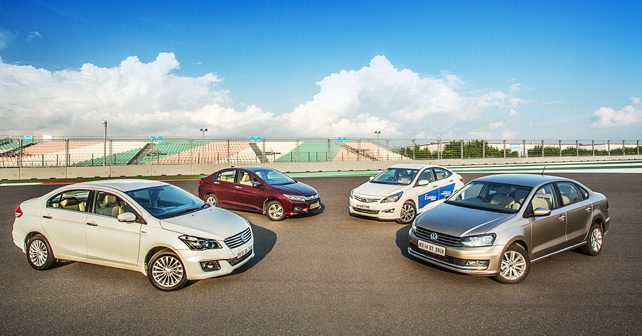
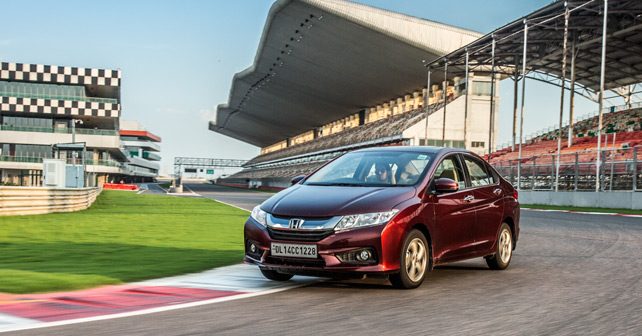





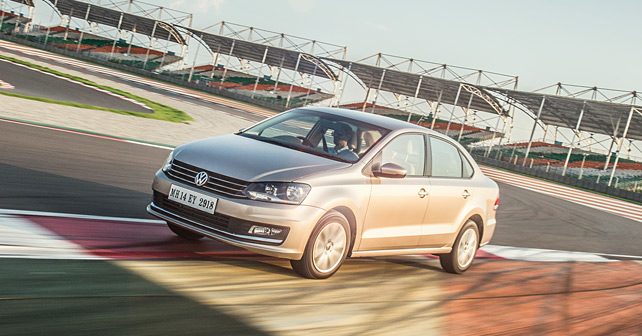
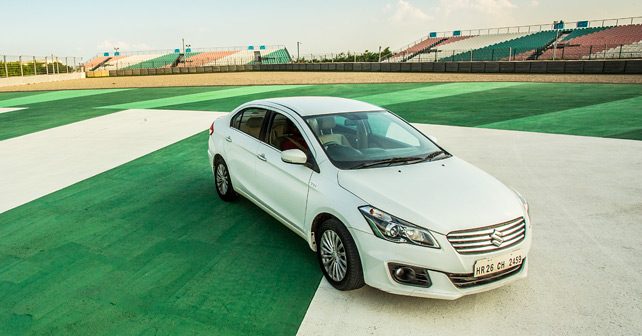










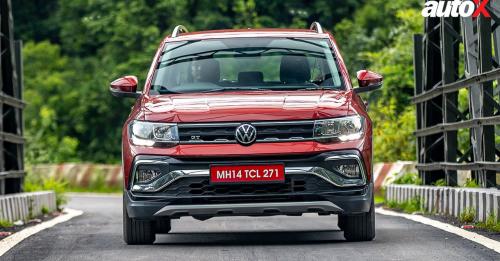














Write your Comment